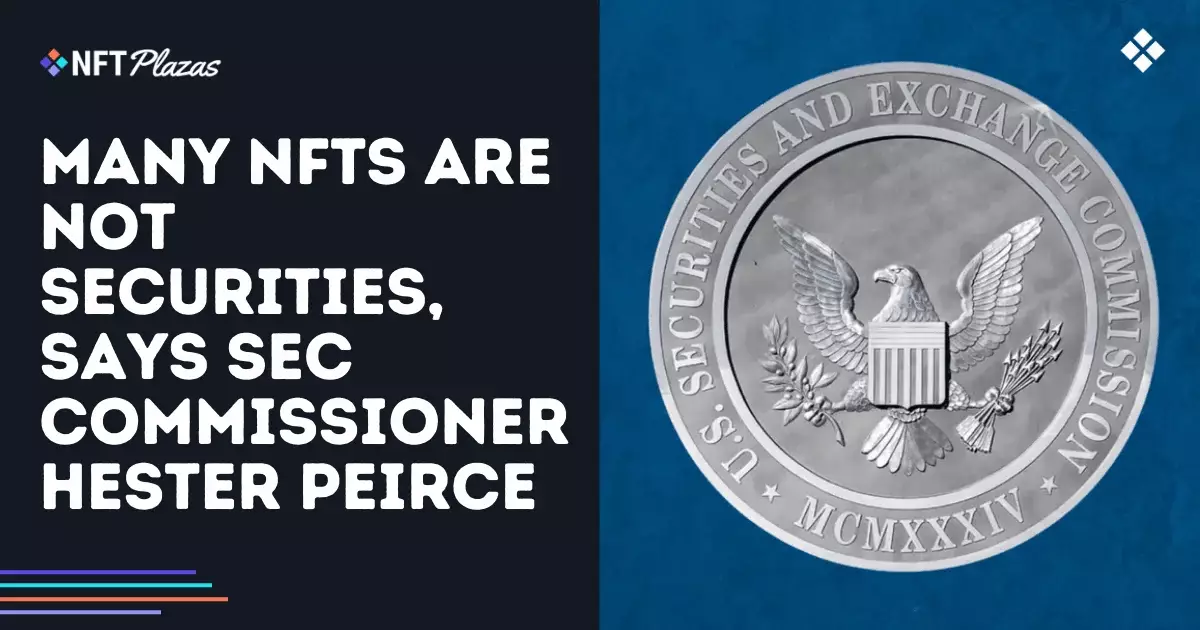In the rapidly evolving landscape of digital assets, the Securities and Exchange Commission’s (SEC) current stance on Non-Fungible Tokens (NFTs) has raised eyebrows. Recent remarks by SEC Commissioner Hester Peirce suggested that many NFTs do not qualify as securities under U.S. law. While this may bring relief to NFT creators caught in regulatory limbo, it simultaneously breeds confusion. The idea that assets could be classified differently based on structure and intent rather than their fundamental nature seems both archaic and impractical. If we are to foster innovation, a clean classification system devoid of ambiguities is imperative.
Enforcement or Guidance?
Peirce criticized the SEC’s prevailing approach, which leans heavily on enforcement rather than preventive guidance. This stance, while occasionally necessary, undermines the entire premise of regulation. By opting for enforcement first, the SEC sends a clear message: the industry is a minefield where missteps can result in penalties or sanctions. This has led to a chilling effect on startups eager to enter the market. Clear, robust guidelines are essential for empowering entrepreneurs, not intimidating them into silence. The upheaval that follows enforcement actions tends to create an environment ripe for uncertainty, which is anathema to growth.
too Much Power in the Hands of Regulators
Peirce’s suggestion for a new Crypto Task Force aimed at regrouping efforts suggests that regulators recognize their own shortcomings. However, the last thing the decentralized world of blockchain needs is more bureaucratic layers. Allowing regulators to define what constitutes a security only amplifies their power, effectively curtailing innovation. A government entity determining the fate of creative digital assets feels counterintuitive to the very essence of what NFTs symbolize: ownership and authenticity in a decentralized ecosystem.
The Safe Harbor Proposal: A Double-Edged Sword
Peirce has advocated for a Safe Harbor framework that would grant crypto projects a grace period to mature without immediately bowing to onerous regulations. While this proposition seems reasonable on the surface, a closer inspection reveals potential pitfalls. This three-year cushion may indeed provide short-term relief, but it risks establishing uneven playing fields where established players outcompete newbies by merely brushing off regulatory obligations. It’s crucial that any framework balances opportunity and compliance in a way that nurtures a diverse marketplace.
Legislative Action: The Need of the Hour
Peirce’s suggestion for future SEC rulemaking is a step in the right direction but remains far too vague. The legislative action needed to clarify the status of NFTs and similar assets is non-negotiable for a robust ecosystem. Without a definitive framework, creators will continue to navigate treacherous waters rife with penalties for inadvertent missteps. A serious dialogue involving stakeholders that includes artists, creators, investors, and regulators is essential, one that allows for legal protections while still embracing the disruptive spirit of blockchain technology.
The future of NFTs hinges on clarity and balance, not regulatory overreach or indecision.















